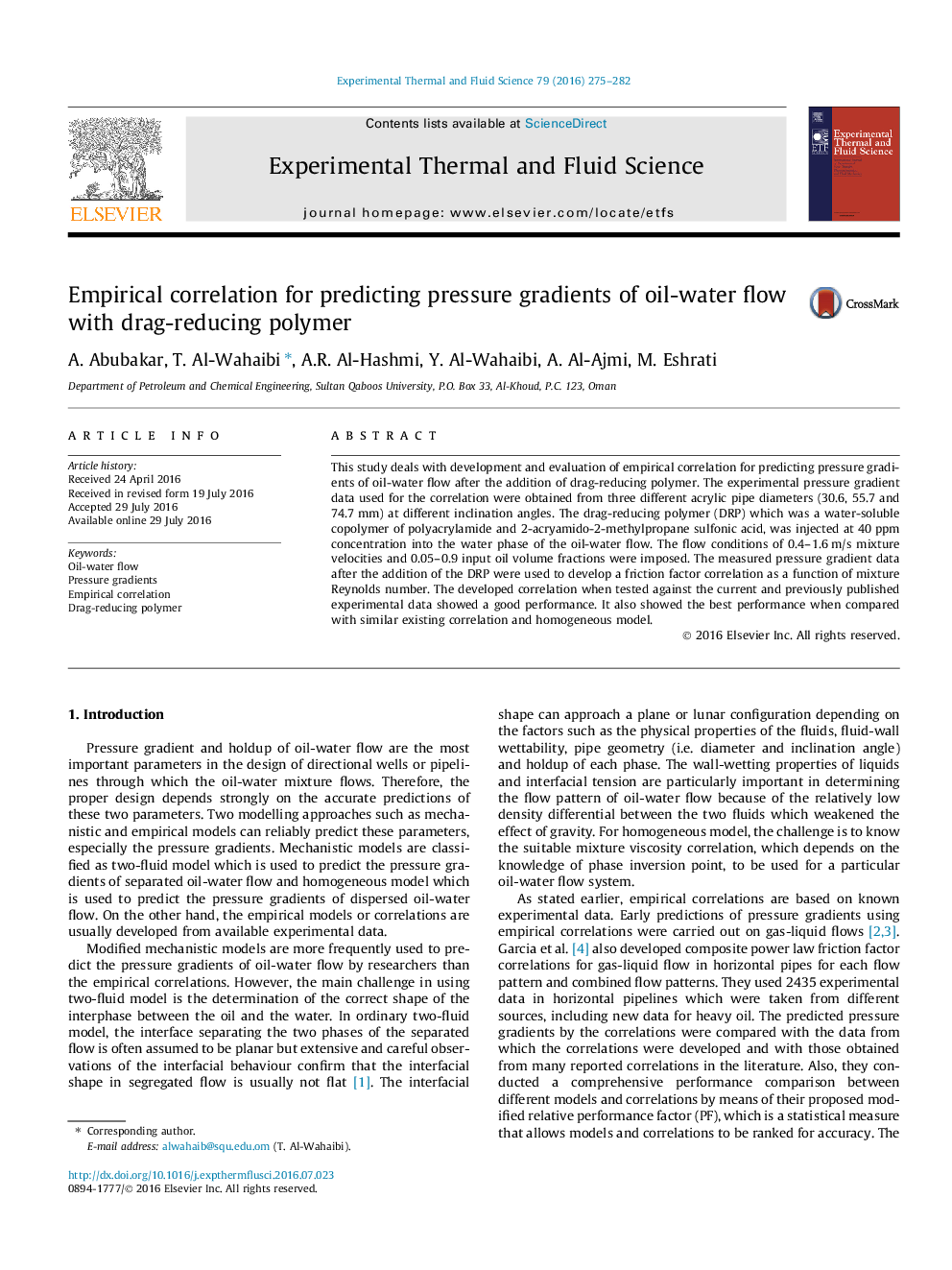| کد مقاله | کد نشریه | سال انتشار | مقاله انگلیسی | نسخه تمام متن |
|---|---|---|---|---|
| 651103 | 1457397 | 2016 | 8 صفحه PDF | دانلود رایگان |
• Friction factor correlation was developed for oil-water flow with drag-reducing polymer.
• The developed correlation was used to predict the pressure gradients of the oil-water flow at maximum drag reductions.
• The comparisons of the predicted pressure gradients with the current and previously published experimental pressure gradients were made.
• Comparisons of the prediction of pressure gradients by the current and published correlations were also made.
This study deals with development and evaluation of empirical correlation for predicting pressure gradients of oil-water flow after the addition of drag-reducing polymer. The experimental pressure gradient data used for the correlation were obtained from three different acrylic pipe diameters (30.6, 55.7 and 74.7 mm) at different inclination angles. The drag-reducing polymer (DRP) which was a water-soluble copolymer of polyacrylamide and 2-acryamido-2-methylpropane sulfonic acid, was injected at 40 ppm concentration into the water phase of the oil-water flow. The flow conditions of 0.4–1.6 m/s mixture velocities and 0.05–0.9 input oil volume fractions were imposed. The measured pressure gradient data after the addition of the DRP were used to develop a friction factor correlation as a function of mixture Reynolds number. The developed correlation when tested against the current and previously published experimental data showed a good performance. It also showed the best performance when compared with similar existing correlation and homogeneous model.
Journal: Experimental Thermal and Fluid Science - Volume 79, December 2016, Pages 275–282
